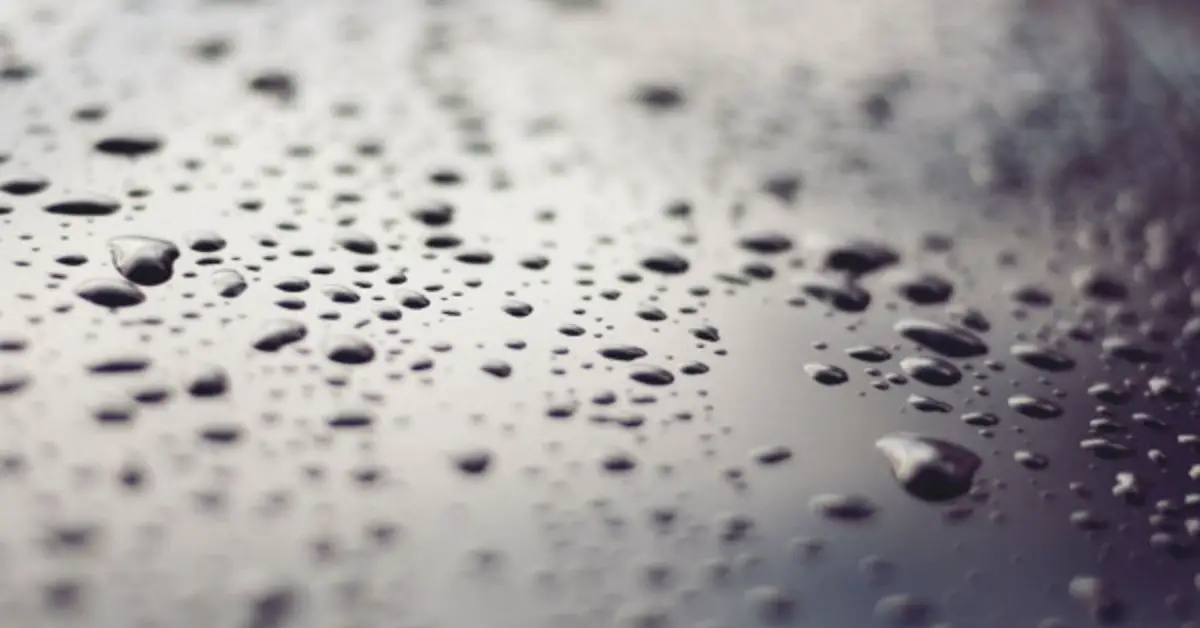
In this article, we explore everything you need to know about tent condensation. Starting from the basics of what condensation is and where it comes from through to what you can do to minimize its impact on your camping experience.
What causes tent condensation?
Tent condensation is caused by a difference in temperature outside your tent and inside your tent. As temperatures drop outside the tent, the warm humid air you exhale inside the tent rises to the cooler surface of the tent and changes from vapor to liquid.
What kind of weather conditions bring on condensation?
Tent condensation is more likely to occur when camping during cold weather or in a place with a cold climate. According to National Geographic, water vapor needs to meet its dewpoint, which is needed for condensation. Cold air holds less water vapor than warm air.
If these two meet, like when you take a can of soda out of the fridge, as the cold surface meets warm air, the water vapor is cooled to its dewpoint, and condensation forms.
Is it possible to stop tent condensation completely?
Condensation cannot be completely stopped. It is a natural process that will happen regardless of what you do to prevent it. Although, it is possible to reduce the amount of condensation.
How can I reduce tent condensation?
There are various ways to minimize condensation:
- Tent placement
Position your tent in an area that doesn’t contribute to condensation like:
- the ground under trees has warmer air in the morning
- not where the ground dips into a low point
- not near bodies of water
- not on moist or marshy ground
- Elimination of moisture sources
Putting sources of moisture inside your tent increases the chances of condensation.
- Don’t cook or boil water inside your tent.
- Dry off wet items before taking them inside or leave them outside.
- Proper Ventilation
The longer you stay inside your tent, the more moisture accumulates in the air, which means condensation will form. Open your tent’s ventilation ports so that the dry air outside can lessen the moisture inside the tent.
What is the best tent for avoiding condensation?
No tent can completely allow you to avoid condensation, but choosing a tent with an appropriate hydrostatic head measurement is important if you don’t want to wake up in a wet tent. Hydrostatic head or HH rating is the measurement of how water-resistant your tent is.
This is measured in millimeters and can range from 1000 mm, and 5000 mm. This means that if your tent has an HH rating of 1000 mm it is already considered water-resistant.
Can tent condensation damage my tent?
Tent condensation in itself does not damage tents. The issue lies with what happens after.
Mold can grow if the tent fabric isn’t dried properly before storing. Air your tent regularly when it is not in use to keep it nice and dry without mold.
How to deal with tent condensation?
As discussed previously, condensation is a natural process, and it cannot be completely stopped. If you wake up one morning and see that condensation has tent condensation has formed, here are a few ways to deal with it:
- React appropriately to the climate
Adjust your tent’s ventilation levels according to the time of day and the climate. During the day, air contains more moisture.
Close your tent’s openings to prevent the humid air from coming in. Open your tent only during the evening as cold air contains less moisture.
- Get a tent dehumidifier
Portable dehumidifiers absorb the moisture in the air and manage condensation from forming in your tent.
- Use a correctly tensioned canopy or rain fly
If your tent uses a canopy as a roof, make sure it has no folds and that it is stretched properly with just the right amount of tension for easier air circulation along the surface of the tent. Stretch your rain fly along with the corners and sides of the tent.
- Wipe tent condensation as soon as it appears
Condensation cannot be avoided, especially if it is raining when there are higher levels of humidity in the air. When this happens, wipe down the condensation from the tent fabric. This will prevent water from dripping down on your gears and damaging them.
What if My Sleeping Bag Gets Wet From Condensation?
Sleeping bags also get affected by condensation. It is common to wake up in the morning and find that your sleeping bag is wet.
In some instances, it is unavoidable. If you should find yourself in a situation like this, here are a few tips for dealing with a wet sleeping bag:
- Use a bag cover or Bivy Sack
This protects your sleeping bag from condensation or morning dew.
- Hang and dry your bag every morning
Remember that you can only do this if you’re camping in a dry or windy area. Drying time depends on the type of sleeping bag you have. Synthetic ones dry quickly, while down sleeping bags take longer.
- Ventilate your tent
Open your tent flaps and let the air flow into your tent, and do its work.
- Don’t wipe the condensation beads
This is actually a sign that the water repellant on your sleeping bag is working. Resist the urge because wiping them down will only cause water to be forced through the water-repellent barrier and damage its efficacy.
- Make sure your tent is dry before storing
Many beginner camper problems only happen because of improper storing techniques. If your bag is not properly dry, moisture accumulates and damages your tent.
A wet tent means more water vapor which leads to condensation on your tent and on your sleeping bag.